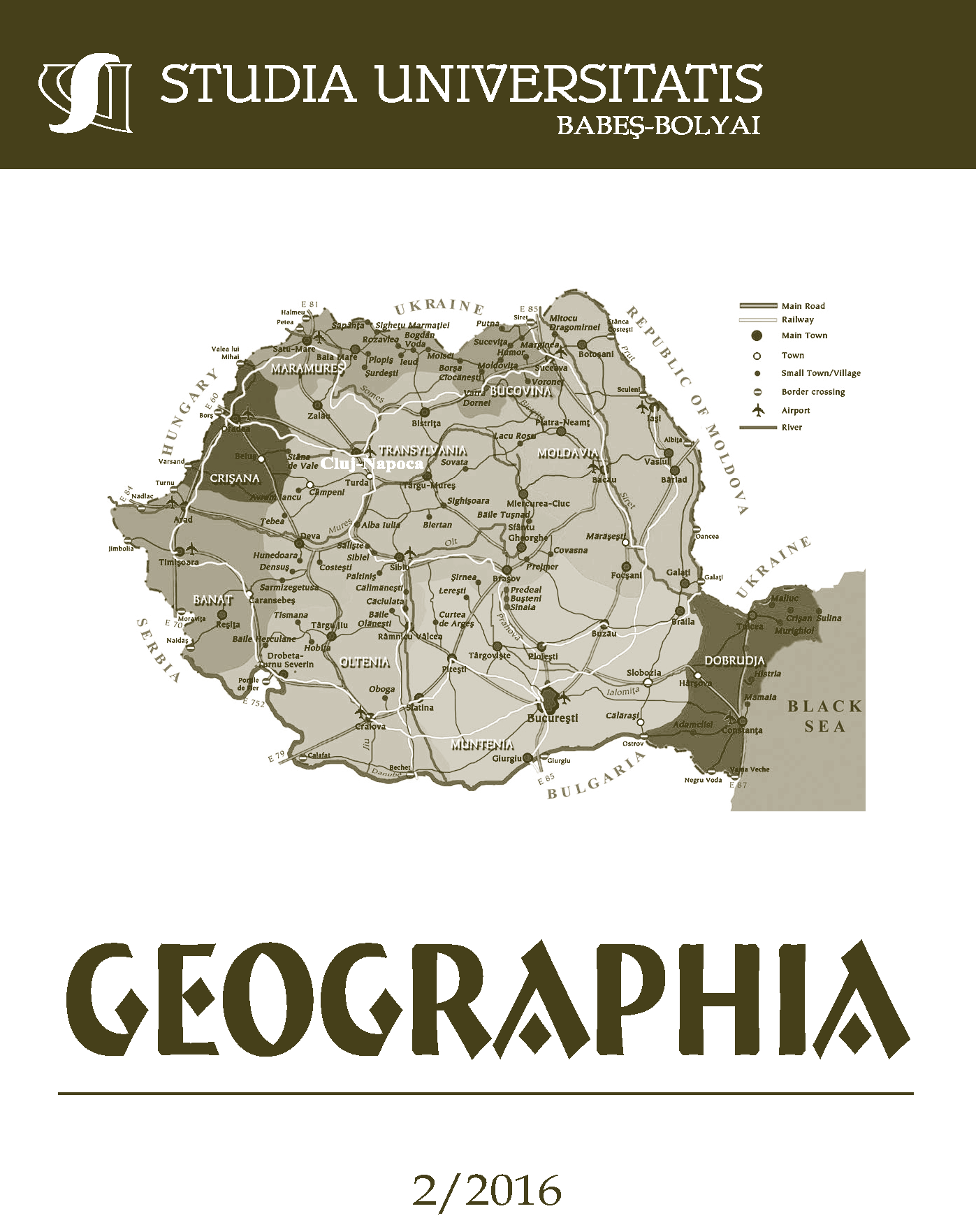VARIABILITY AND TRENDS IN THE VIȘEU RIVER RUNOFF REGIME
Keywords:
Vișeu Catchment, runoff trend, change point detection, statistical tests, Mann-Kendall test.Abstract
Variability and Trends in the Vișeu River Runoff Regime. The classic hydrological water management dealt with the changing resources by assuming the existence of stationarity. Once stationarity is neglected in the design of hydraulic engineering, numerous errors and risk may exist in the operations and management strategies and will lead to unforeseen losses. Thus, one of the most important questions in today’s hydrology are: Did stationarity die? and if it is true How did stationarity die? As we know the climatic change is widely accepted so it is sad that by 2050 the effects of climate change may have a generally larger effect on flow regimes than it is estimated that dams and water withdrawals. If this is so, we must consideration that in this moment one of the most important aspect/moment is the change point identification in a period, from where significant change has occurred in a time series, for this we choose to use the Ms Excel Addinsoft XLStat to assess the homogeneity of the data by the Pettitt’s test, the von Neumann ratio test, the Buishand range test and also the standard normal homogeneity tests (SNHT). For the trend analysis we used the Mann-Kendall test and the classic linear regression test. Based on the results, we conclude that in case of the Vișeu watershed stationarity is questionable if not totally missing. As we see even if the precipitation values do not show significant changes regarding their homogeneity, the runoff series are changing, and in most cases this change is identified in the 20thcentury last decade. These results urge us to rethink and to reevaluate our sustainable water resource management for the future.
References
Döll, P., Zhang, J. (2010). Impact of climate change on freshwater ecosystems: a global-scale analysis of ecologically relevant river flow alterations. Hydrology and Earth System Sciences Journal, 14, 5, 783–799.
Galloway, G.E. (2011). If Stationarity is Dead, What Do We Do Now?, Journal of the American Water Resources Association, 47, 563-570.
Hongbo, Zhang, Bin, Wang, Tian, Lan, Jianjun, Shi & Shibao, Lu (2016). Change-point detection and variation assessment of the hydrologic regime of the Wenyu River, Toxicological & Environmental Chemistry, 98, 3-4, 358-375, DOI:10.1080/02772248. 2015.1123480.
IPCC (2014). Climate Change 2014: Synthesis Report. Contribution of Working Groups I, II and III to the Fifth Assessment Report of the Intergovernmental Panel on Climate Change [Core Writing Team, R.K. Pachauri and L.A. Meyer (eds.)]. IPCC, Geneva, Switzerland, 151 pp.
Jaiswal, R.K., Lohani, A.K., Tiwari, H.L. (2015). Statistical Analysis for Change Detection and Trend Assessment in Climatological Parameters, Environmental Processes, 2/729, http://dx.doi.org/10.1007/s40710-015-0105-3.
Jeneiová, Katarína, Kohnová, Silvia, Miroslav, S. (2014). Detecting Trends in the Annual Maximum Discharges in the Vah River Basin, Slovakia, Acta Silvatica et Lignaria Hungarica, Vol. 10, Nr. 2 (2014), 133–144, DOI: 10.2478/aslh-2014-0010
Milly, P.C.D., Betancourt, J., Falkenmark, M., Hirsch, R.M., Kundzewicz, Z.W., Lettenmaier, D.P., Stouffer, R.J. (2008). Stationarity is Dead: Whither Water Management?, Science, 319, 573-574.
Pettitt, A.N. (1979). A Non-Parametric Approach to the Change-Point Problem. Applied Statistics, 28, 126-135.
Ujvari, I. (1972). Geografia apelor României, Edit. Ştiinţifică, Bucharest.
Vitousek, P.M., Mooney, H.A., Lubchenco, J., Melillo, J.M. (1997). Human Domination of Earth’s Ecosystems, Science, 277, 494-499.
Vorosmarty, C.J., Green, P., Salisbury, J., Lammers, R.B. (2000). Global Water Resources: Vulnerability from Climate Change and Population Growth, Science, 289, 284-288.
Vorosmarty, C.J., McIntyre, P.B., Gessner, M.O., Dudgeon, D., Prusevich, A., Green, P., Glidden, S. et al. (2010). Global Threats to Human Water Security and River Biodiversity, Nature, 467,555-561.
Winingaard J.B., Kleink Tank, A.M.G., Konnen, G.P. (2003). Homogeneity of 20th Century European Daily Temperature and Precipitation Series. International Journal of Climatology, 23, 679–692.
World Meteorological Organization (1966). Climate change, World Meteorological Organization, Technical Note 79, Geneva.
Downloads
Published
How to Cite
Issue
Section
License
Copyright (c) 2016 Studia Universitatis Babeș-Bolyai Geographia

This work is licensed under a Creative Commons Attribution-NonCommercial-NoDerivatives 4.0 International License.





 ©Studia Universitatis Babeş-Bolyai Geographia. Published by Babeș-Bolyai University.
©Studia Universitatis Babeş-Bolyai Geographia. Published by Babeș-Bolyai University.